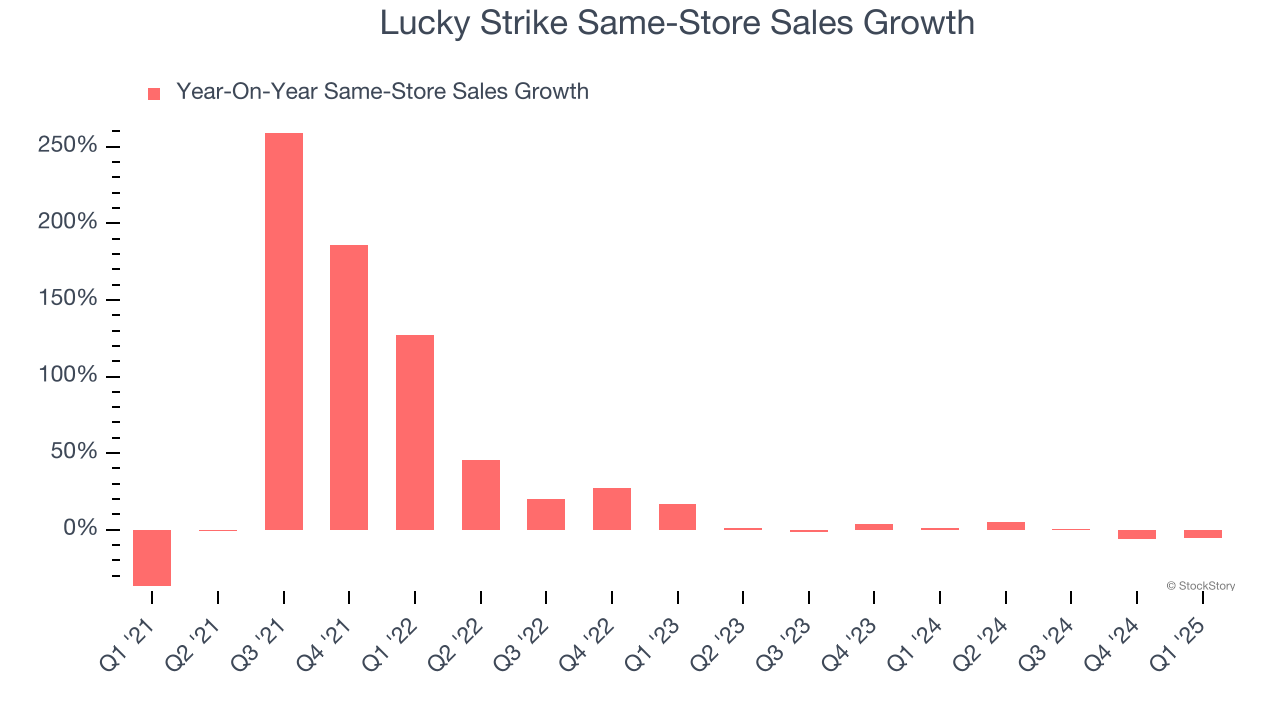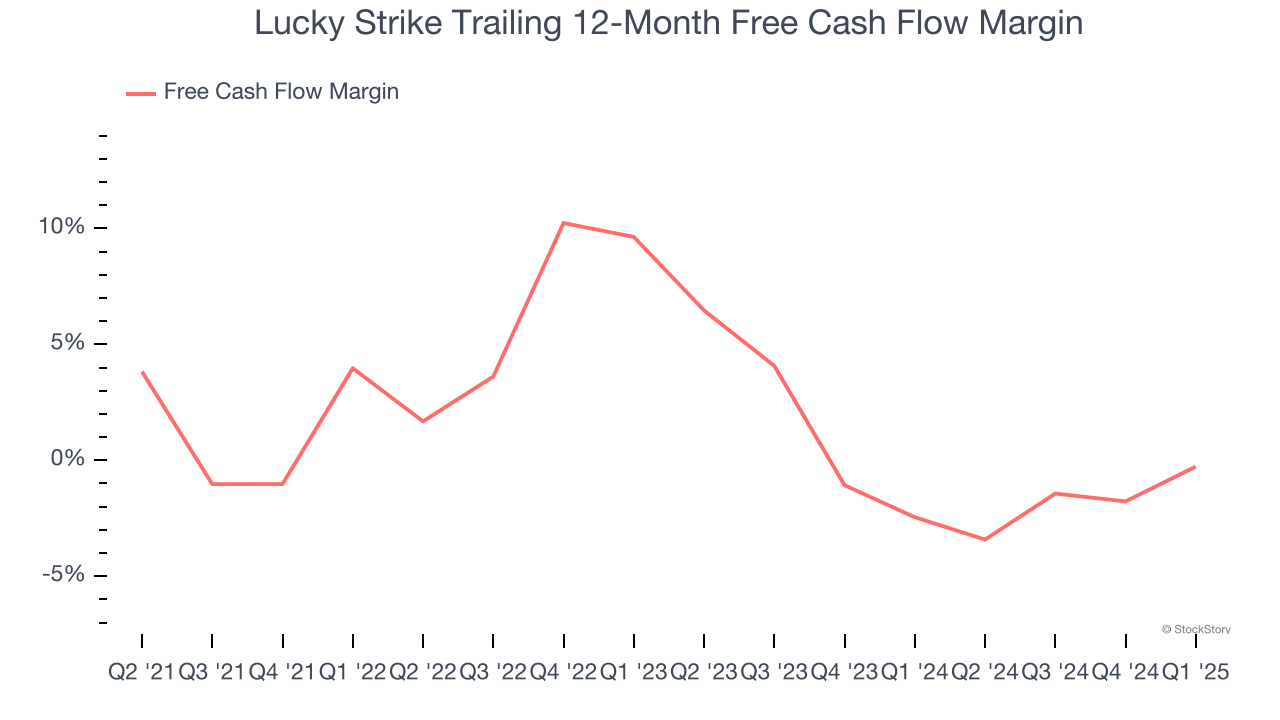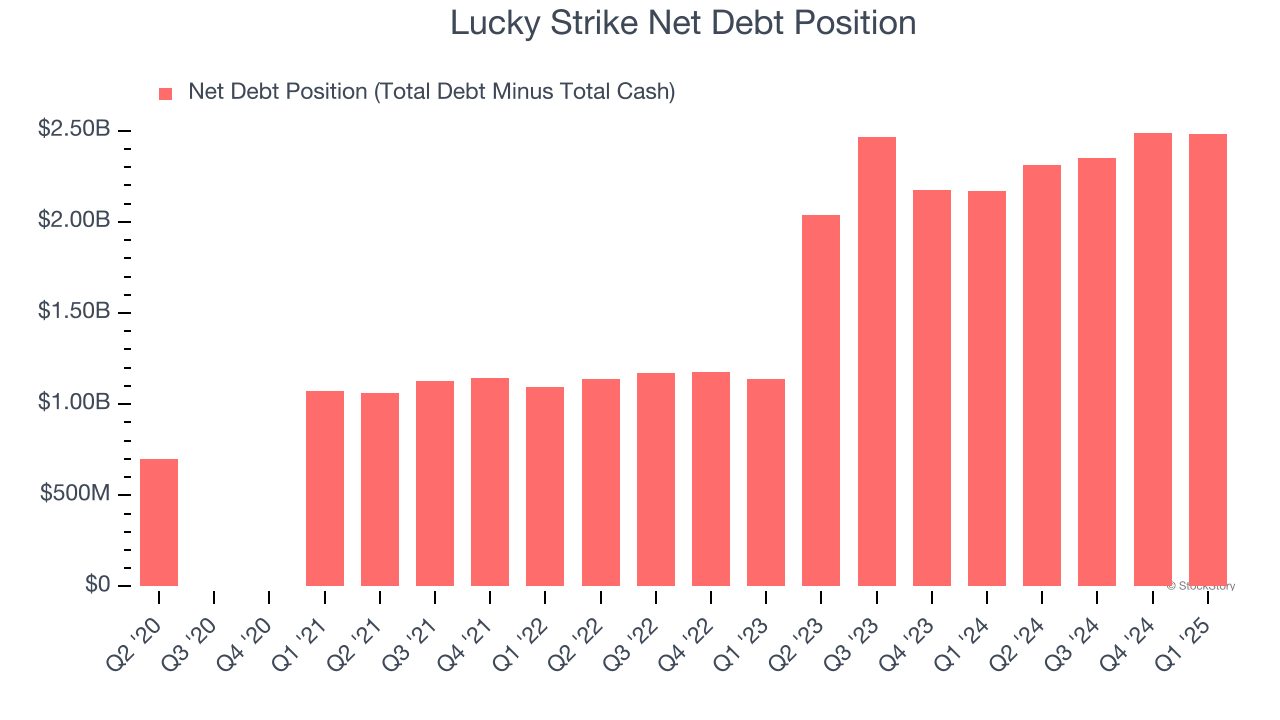
Since January 2025, Lucky Strike has been in a holding pattern, floating around $10.40. The stock also fell short of the S&P 500’s 5.8% gain during that period.
Is there a buying opportunity in Lucky Strike, or does it present a risk to your portfolio? Get the full breakdown from our expert analysts, it’s free.
Why Do We Think Lucky Strike Will Underperform?
We're sitting this one out for now. Here are three reasons why we avoid LUCK and a stock we'd rather own.
1. Flat Same-Store Sales Indicate Weak Demand
We can better understand Leisure Facilities companies by analyzing their same-store sales. This metric measures the change in sales at brick-and-mortar locations that have existed for at least a year, giving visibility into Lucky Strike’s underlying demand characteristics.
Over the last two years, Lucky Strike failed to grow its same-store sales. This performance was underwhelming and implies there may be increasing competition or market saturation. It also suggests Lucky Strike might have to change its strategy and pricing, which can disrupt operations.

2. Cash Burn Ignites Concerns
If you’ve followed StockStory for a while, you know we emphasize free cash flow. Why, you ask? We believe that in the end, cash is king, and you can’t use accounting profits to pay the bills.
While Lucky Strike posted positive free cash flow this quarter, the broader story hasn’t been so clean. Over the last two years, Lucky Strike’s demanding reinvestments to stay relevant have drained its resources, putting it in a pinch and limiting its ability to return capital to investors. Its free cash flow margin averaged negative 1.3%, meaning it lit $1.33 of cash on fire for every $100 in revenue.

3. Short Cash Runway Exposes Shareholders to Potential Dilution
As long-term investors, the risk we care about most is the permanent loss of capital, which can happen when a company goes bankrupt or raises money from a disadvantaged position. This is separate from short-term stock price volatility, something we are much less bothered by.
Lucky Strike burned through $3.26 million of cash over the last year, and its $2.56 billion of debt exceeds the $79.09 million of cash on its balance sheet. This is a deal breaker for us because indebted loss-making companies spell trouble.

Unless the Lucky Strike’s fundamentals change quickly, it might find itself in a position where it must raise capital from investors to continue operating. Whether that would be favorable is unclear because dilution is a headwind for shareholder returns.
We remain cautious of Lucky Strike until it generates consistent free cash flow or any of its announced financing plans materialize on its balance sheet.
Final Judgment
We see the value of companies helping consumers, but in the case of Lucky Strike, we’re out. With its shares underperforming the market lately, the stock trades at 34.6× forward P/E (or $10.40 per share). This valuation is reasonable, but the company’s shaky fundamentals present too much downside risk. There are better stocks to buy right now. We’d recommend looking at one of our top software and edge computing picks.
Stocks We Like More Than Lucky Strike
Trump’s April 2025 tariff bombshell triggered a massive market selloff, but stocks have since staged an impressive recovery, leaving those who panic sold on the sidelines.
Take advantage of the rebound by checking out our Top 5 Growth Stocks for this month. This is a curated list of our High Quality stocks that have generated a market-beating return of 183% over the last five years (as of March 31st 2025).
Stocks that made our list in 2020 include now familiar names such as Nvidia (+1,545% between March 2020 and March 2025) as well as under-the-radar businesses like the once-small-cap company Comfort Systems (+782% five-year return). Find your next big winner with StockStory today.
StockStory is growing and hiring equity analyst and marketing roles. Are you a 0 to 1 builder passionate about the markets and AI? See the open roles here.
